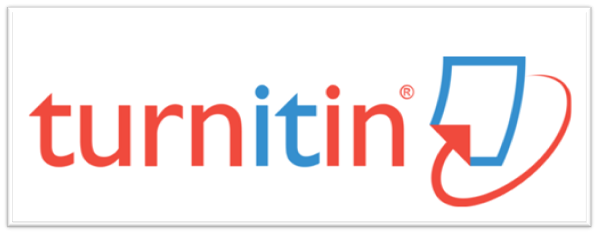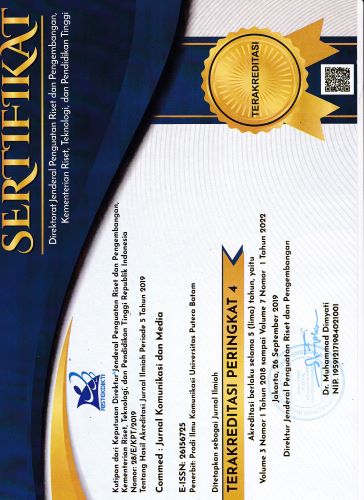Plagiarism Screening
PLAGIARISM POLICY
Definition of Plagiarism
Commed: Journal of Communication and Media will not tolerate indicated texts or take plagiarism. According to the Regulation of the Minister of Education Republic of Indonesia Number 17 Year 2010 it says "Plagiarism is intentional or inadvertent acts in obtaining or trying to obtain credit or value for a scientific work, by quoting part or all of the work and or scientific work of another party recognized as scientific work, without state the source appropriately and adequately ". Therefore, in some conditions the scope of plagiarism is as follows: (1). Quoting other people's words or sentences without using quotation marks and without mentioning the identity of the source, (2). Using the ideas, views or theories of others without mentioning the identity of the source, (3. Using facts (data, information) belonging to others without mentioning the source's identity, (4) Recognizing the writings of others as their own writing, (5). change other people's sentences into their own sentence structure without changing their ideas) without mentioning the identity of the source, (6) Submit a scientific work that is produced and / or has been published by another party as if it were its own work.
Plagiarism Type
According to Soelistyo (2011) there are several types of plagiarism:
- Word for word plagiarism (Word for word Plagiarism). The author uses the words of other writers (exactly) without mentioning the source.
- Plagiarism over sources (Plagiarism of Source). The author uses the ideas of others without giving sufficient recognition (without clearly mentioning the source).
- Plagiarism of Authorship (Plagiarism of Authorship). The author acknowledges as the author of the writings of other people.
- Self-Plagiarism. Included in this type are the authors publish an article in more than one editorial publication. And recycle papers / scientific papers. What is important in self-plagiarism is that when you take your own work, the new work that is produced must have meaningful changes. This means that the old work is a small part of the new work produced. So that the reader will get new things, which the writer actually pours into the paper that uses the old work.
Prevention:
In an article submitted to the Command: Journal of Communication and Media the author must include a statement signed by the author that:
- This article is free from plagiarism.
- Section Editor checks similarity using a plagiarism detection tool / application, Turnitin.
- If there is evidence of plagiarism in the article, the author is willing to accept sanctions in accordance with the laws and provisions in force in the editorial Commed: Journal of Communication and Media
Sanctions:
- Warning letter
- Cancellation of publication
- Revocation of article
Source:
Soelistyo, H. (2011). Plagiarisme: Pelanggaran Hak Cipta dan Etika. Yogyakarta: Penerbit Kanisius.















